Matzo Balls--Sinkers or Floaters?
A quick look at the Passover classic that tops the list of holiday favorites, plus a bit of Seinfeld matzo ball schtick
Passover begins Saturday, April 12 at sundown. I’m hosting the second seder the next day, so you know where I’ll be today!
A seder, the ritual meal commemorating the Exodus story of the Israelites’ liberation from slavery in Egypt, is not something you can just slap together at the last minute. My favorite Jewish cooking maven, journalist and author Joan Nathan (click here to read the post I wrote about her last year when her book, My Life in Recipes: Food, Family, and Memories, came out), outlined a schedule for planning one in a 2012 article in the New York Times. It calls for beginning the process nine days ahead of time (here’s a gift link). Obviously, if you’re putting a seder on this weekend for a lot of people and starting now, it would be difficult to pull off—or at least the ambitious version that Nathan outlines. But Passover lasts eight days—there’s always next weekend!
I didn’t follow the Nathan Passover playbook, though it turns out that the majority of dishes I’m making either come from or are inspired by recipes in several of her cookbooks. But that’s a story for another day. Today I’m talking matzo balls, specifically those found floating (or sinking!) in a bowl of chicken soup. They’re traditionally one of the essentials served as part of the Passover seder meal, at least the kind of seder I experienced growing up.
Of course matzo ball soup is also a beloved staple at Jewish delis! In last week’s post I had asked readers’ to let me know what kind of matzo balls they favored. Did they like the light, fluffy type that floats atop the soup as if they were filled with air instead of matzo meal, eggs and fat, or were they partial to the ones that are dense, with a firmer, somewhat chewy texture? Or did they fall somewhere in the middle?

Joe Blachman, who just happens to be a cousin, weighed in:
Matzah balls! My memory of "our" side of my family is of fluffy light floaters that melted in one's mouth. My father's side of the family was a distinct contrast, especially my late aunt Phyllis' heavy, dense, chewy matzah balls. Very different, but I loved them equally. I find that most homemade matzah balls I encounter (and devour) these days are of the lighter and softer variety. For a more robust matzah ball, I think of the ones one gets at a deli—the large one-per-bowl variety that dominates the bowl's appearance before the diner—with soup that barely climbs to the ball's equator. Those are often light on the outside, revealing a satisfyingly dense inner core. Really the best of both worlds and filling enough that I can't imagine having a bowl of soup AND a corned beef sandwich together!
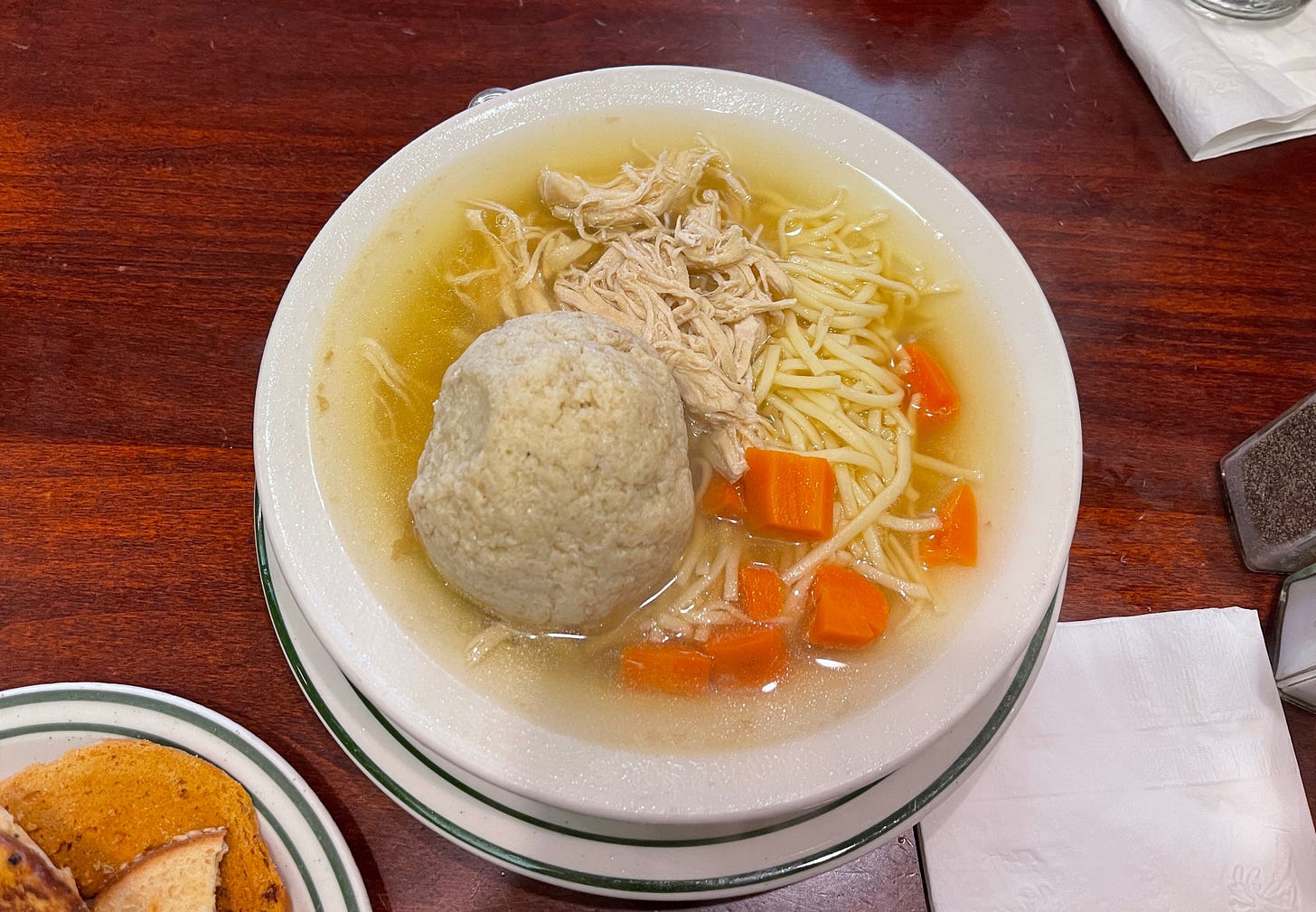
I’m with Joe and can’t imagine having a sandwich after consuming such an enormous bowl of soup. Here’s an example (above) from a meal during a deli crawl my husband Jeff and I took with friends four years ago. I also don’t think it would be advisable to serve such a large matzo ball at a seder feast. You might need to take a walk before the next course!
The matzo balls I remember from childhood were called kneidlach, the Yiddish word for these dumplings. They were quite a bit smaller than the deli variety, perhaps 2 to 3 inches in diameter, and made a dense and satisfying mouthful. I can’t recall if they floated or sank, but that’s pretty much the size I serve at the seder, two or three balls per ladle of soup.
Matzo ball experiments
As I was putting together a rather complicated meal, with two main dishes (chicken and beef), several desserts and the variety of ritual food items that fill the seder plate, making matzo balls at the last minute was a non-starter. It’s perfectly possible to make and freeze the soup and the matzo balls in advance, and that’s what I did.
I decided to experiment with two types of matzo balls, aiming for medium lightness in the first variety using a recipe from my almost-loved-to-death 1988 copy of Nathan’s Jewish Holiday Kitchen and changing it slightly. Here’s the page with the recipe, including notes of variations I’ve tried over the years scribbled all over it. I hope you can read it. If not, please let me know.
Note: One thing that isn’t mentioned and is crucial is to cover the pot of simmering matzo balls. It apparently helps them cook and makes them lighter. You may have to cook them longer than 30 minutes, depending on how large you make them. If you cut one open and there are dark spots in the middle, the matzo ball is likely not cooked all the way through. I found mine needed to simmer for at least another 15 to 20 minutes.
For Recipe #2, I was looking for something I’d never tried; maximum lightness using a method that would have perplexed my mother—adding baking powder to the matzo ball mixture. It’s Tori Avey’s recipe for “floater matzo balls” (link here). Avey suggests two ways to create airy matzo balls. One path is to separate the eggs and fold the whipped whites into a batter that includes some seltzer (carbonated) water.
The second method is to add some baking powder. When I made Nathan’s recipe, I did separate the eggs, but didn’t use the seltzer. When I made Avey’s, I added that single teaspoon of baking powder. It caused the matzo balls to swell at least a quarter to a half-inch larger than the ones in the Nathan recipe and to migrate rather quickly to the top of the soup pot. Even though most leavening is forbidden on Passover, apparently baking powder is okay. This is how Avey explains it:
“Baking powder is mineral based, not grain based. Consequently, it does not fall under the banner of ‘chametz,’ the group of foods that are banned for Passover.”
For those who just want a light matzo ball and have no qualms about leavening, baking powder might be the answer.
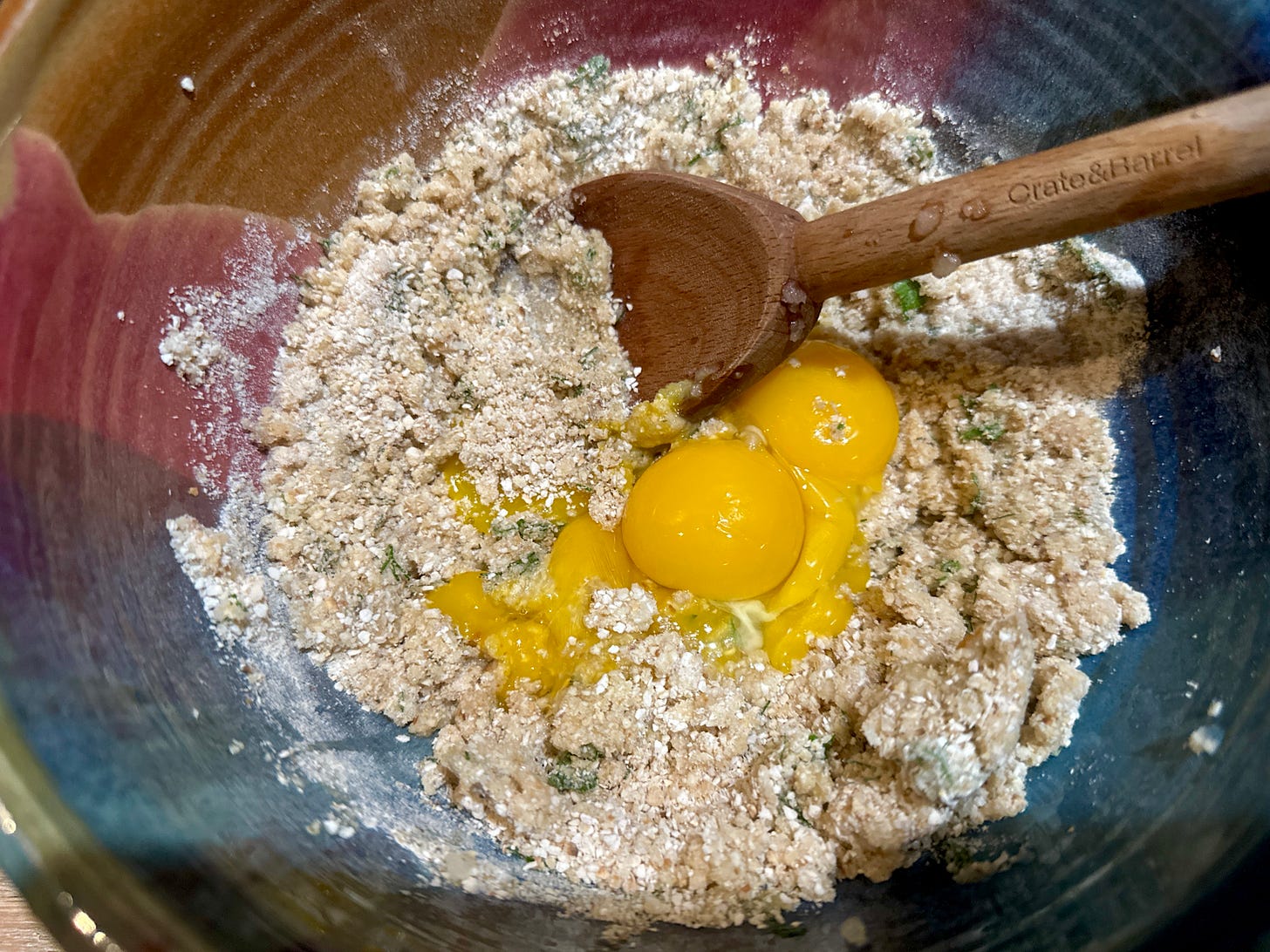
There are still many traditionalists who will stay away from it, but it’s notable that the two elements that comprise baking powder—monocalcium phosphate and sodium bicarbonate—are included among the listed ingredients on most matzo ball mixes that are labeled “Kosher for Passover.”
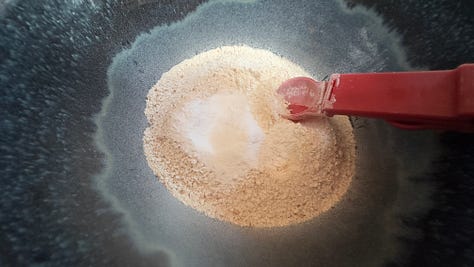

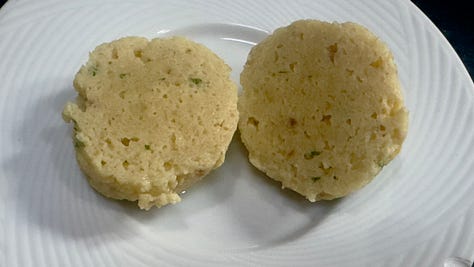
Both batches of matzo balls were delicious after I fished them out of the pot of boiling, salted water after simmering, covered, for 40 minutes to an hour, sliced them in half to check for doneness and sampled them. The Nathan ones, denser and flavorful from a mix of fresh dill and parsley, grated nutmeg, dry ginger, a few grated roasted almonds and a goodly amount of schmaltz (chicken fat), reminded me of the kneidlach of childhood—almonds and nutmeg were the secret ingredients of those, I think. The airy Avey ones were almost as delicious and noticeably lighter.
As I’m write this, both are sitting in plastic bags after being flash frozen. I may have another verdict after throwing them into the chicken stock and serving them at our seder. Stay tuned for more in the coming days, including some pictures of other dishes I’m serving.
And just in case you need a laugh (don’t we all?), here’s a clip from the 1997 Seinfeld episode called “The Yada Yada” in which dentist Tim Whatley (played by Bryan Cranston) annoys Jerry by cracking a matzo ball joke while he’s poking around in Jerry’s mouth.
Thanks so much for reading!
For a more personal look at Passover in the context of my immigrant family, here’s a link to a story I wrote four years ago.
Many fond wishes for a Happy Passover as well as a Happy Easter to those of you who celebrate either (or both!) holidays.
See you next time!
Ruth



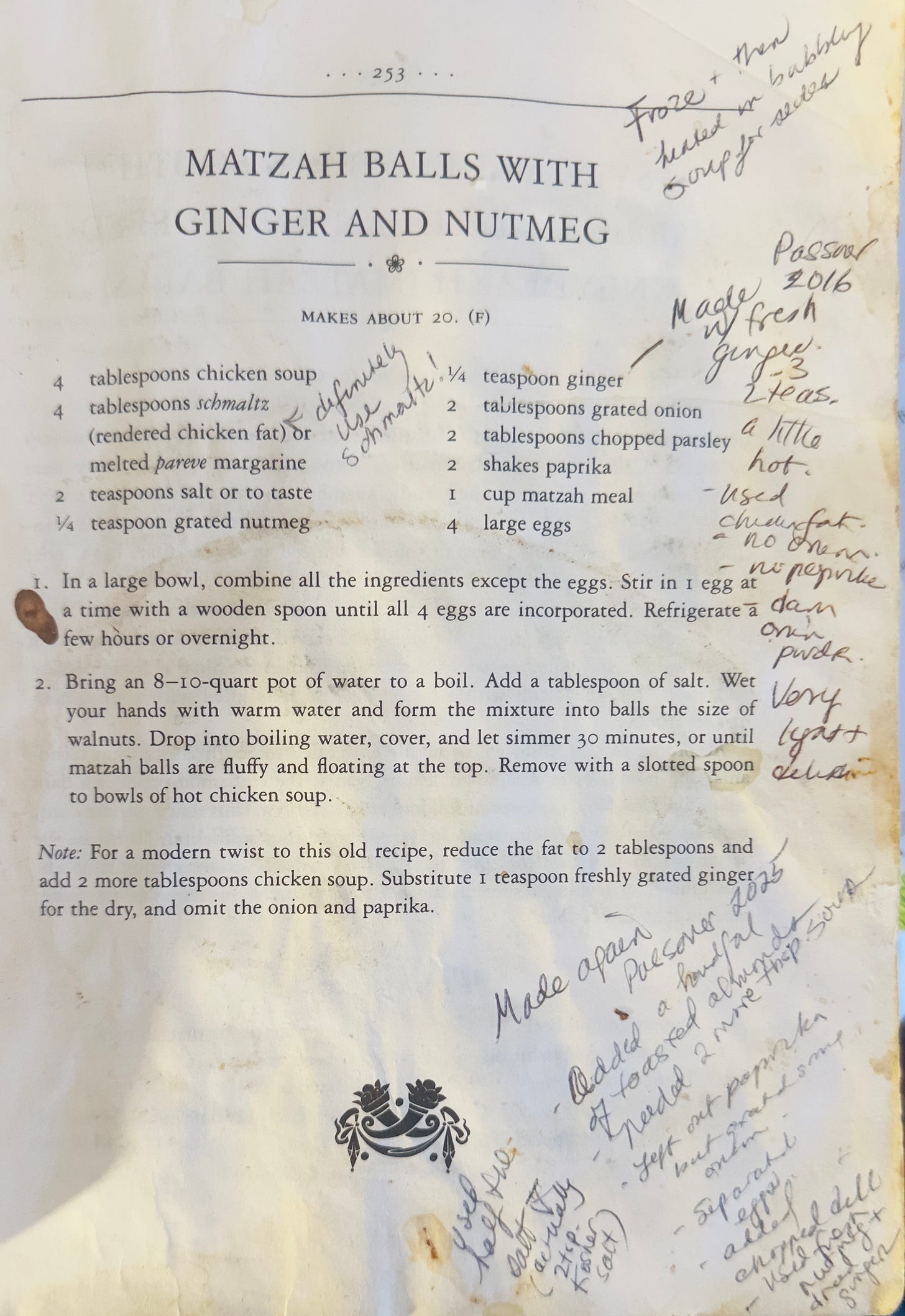
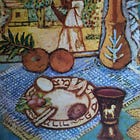
I like my matzoh balls heavy as lead. That's how my grandma made them! My mother in law would send me home the heavy balls that were her mistakes. I loved those too. Happy Paseach Grahams!
Light matzo balls, please. although I wouldn't turn down the heavy ones either. Anything with schmaltz is delicious. Loved the smell of the gribenes and onions frying. Mostly because I knew chopped liver would be coming soon. About the Seinfeld episode; it's also the one where Kramer accuses Jerry of being an "anti-dentite". As always I enjoy reading your newsletter. Happy Passover to you and the family!